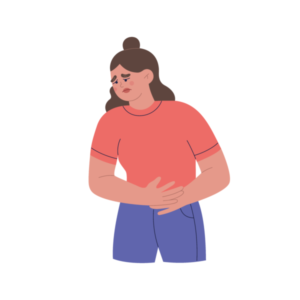Salmonella: What are the Causes, Symptoms, and Prevention

Introduction:
Salmonella is a well-known bacterial infection that affects millions of people around the world each year. It is a significant cause of foodborne illnesses, leading to symptoms such as diarrhea, abdominal cramps, and fever. In this blog post, we will delve into the details this bacteria, including its causes, and symptoms.
The Statistics at a Glance
The Centers for Disease Control and Prevention (CDC) estimate that each year in the U.S., there are about 1.35 million cases of salmonellosis, with 26,500 hospitalizations and 420 deaths. Contaminated food is the source for most of these cases. Salmonellosis is the second leading cause of foodborne illness in the U.S., after norovirus.
1. What is Salmonella?
Salmonella is a group of bacteria that can cause illness in both humans and animals. There are two main types of Salmonella: Salmonella enterica and Salmonella bongori. Salmonella enterica is the most common type and is responsible for the majority of infections in humans.
2. Causes and Transmission:
This bacteria are usually found in the intestines of animals, particularly poultry, cattle, and reptiles. The infection can be contracted through various means, including:
– Contaminated Food: Consuming undercooked or raw eggs, poultry, meat, unpasteurized milk, or contaminated fruits and vegetables can introduce Salmonella into the body.
– Cross-Contamination: Poor food handling practices, such as using the same cutting board or utensils for raw and cooked foods, can lead to cross-contamination and the spread of Salmonella.
– Person-to-Person: Salmonella can be transmitted through direct contact with infected individuals or their feces, especially in settings like daycare centers or nursing homes.
Symptoms of Salmonella Infection:
The symptoms of Salmonella infection appear within 12 to 72 hours after exposure and may include:
– Diarrhea: Often watery or bloody.
– Abdominal Cramps: Severe cramping and pain in the stomach.
– Fever: Usually accompanied by chills.
– Nausea and Vomiting: Sometimes present, but not in all cases.
– Headache: Mild to severe headaches may occur.
4. Risk Factors and Complications:
Certain groups of people are more susceptible to severe complications from Salmonella, including infants, the elderly, and individuals with weakened immune systems. Potential complications of a Salmonella infection may include:
– Dehydration: Severe diarrhea and vomiting can lead to dehydration, especially in young children and the elderly.
– Bacteremia: Salmonella can enter the blood system and cause infections in other parts of the body, leading to severe illness.
– Reactive Arthritis: In some cases, a Salmonella infection can trigger reactive arthritis, which causes joint pain, swelling, and stiffness.
5. Preventing Salmonella Infections:
Prevention is crucial in reducing the risk of Salmonella infections. Here are some effective preventive measures:
Cook poultry, eggs, and meat thoroughly, and avoid consuming raw or undercooked foods. Using proper hand hygiene when handling food, and prevent cross-contamination by using separate utensils as well as using cutting boards for raw and cooked items.
– Safe Handling of Pets: Wash hands thoroughly after handling reptiles, birds, or other animals, as they can carry Salmonella.
– Proper Food Storage: Store perishable foods at appropriate temperatures and refrigerate promptly to prevent bacterial growth.
– Water Safety: Drink and use clean, safe water for cooking and washing food to prevent contamination.
Conclusion:
Salmonella infections are a common type of foodborne illness that can cause significant discomfort and health complications. By understanding the causes, symptoms, and preventive measures associated with Salmonella, individuals can take proactive steps to protect themselves and their loved ones. Practicing good food hygiene, proper cooking techniques, and maintaining personal hygiene can go a long way in reducing the risk of Salmonella infections and promoting a healthier lifestyle.
For more information from the CDC follow this link: https://www.cdc.gov/salmonella/general/index.html
For more of my kitchen-related articles Go Here: https://darlenestable.com/category/blog-post/
